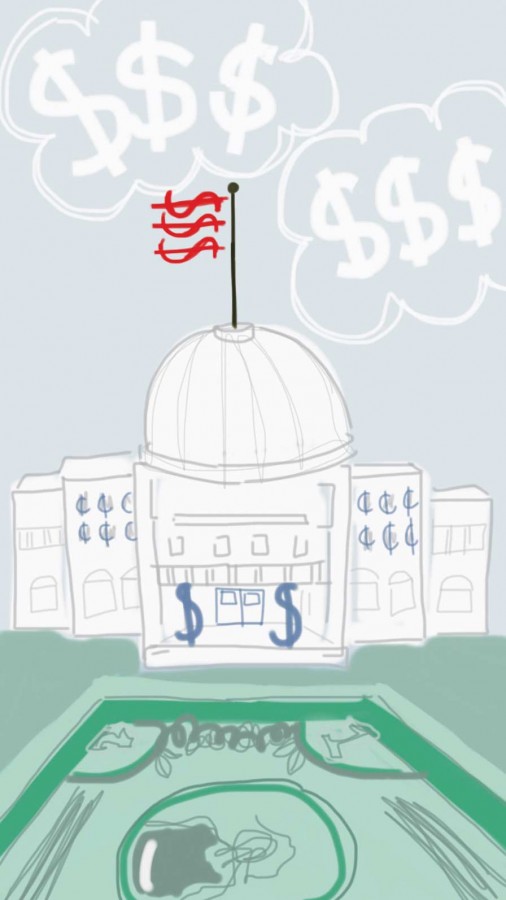“This process stinks.”
That’s how Speaker of the House of Representatives Paul Ryan described the constant flirting with the ledge of shutdown or default that has plagued political debates about the U.S. budget over the past few years. “This is not how we should be doing the people’s business,” he added. Thankfully, it looks as though the process has succeeded, for once: a two-year budget deal was reached on October 26.
But, this raises a broader question: how should “the people’s businesses” be done?
As part of the controversy surrounding various budget proposals, many politicians, advocacy groups, public figures, and ordinary citizens have condemned what they perceive as wasteful spending in the U.S. government. Many argue that extensive government programs cost taxpayers billions of dollars without providing any real benefits. And they’re right – sort of.
Waste
The U.S. government owes more than $18 trillion in debt. We should be doing everything we can to make sure that we’re only spending money on government programs that are genuinely valuable, and many of them just aren’t.
While we require other countries to reduce subsidies to poor farmers under trade deals, we pay our own farmers’ overseas advertising costs, to the tune of $200 million a year.
We also pay $55 million a year to peanut farmers, except who gets this assistance is defined as people who farmed peanuts between 1998 and 2001. They’re paid regardless of whether they even currently farm peanuts.
“There is no question that agricultural subsidies distort market prices,” says U.S. history and economics teacher David Zalk. “The consumer ends up paying more than they otherwise would. The justification for that is…we need to assure farmers have an adequate income, but I think, as a practical matter, that most of the benefits going to very large agribusiness corporations…A lot of people benefit from agricultural subsidies who don’t really need the money to stay in business.” Indeed, out of the $2.3 billion we spend on these subsidies each year, 60% goes to the wealthiest 1% of farmers.
In addition, according to a report by the Government Accountability Office, we could save a whopping $4.4 billion over 30 years just by switching from dollar bills to dollar coins.
Another area in which much taxpayer money is wasted is the military. The U.S. spends more money on the military than any other country in the world – in fact, we spend more than the next seven countries on the list combined.
Much of this spending could be eliminated. The Cato Institute, a Washington, D.C.-based think tank, found in a 2010 report that the U.S. military could save $1.224 trillion over ten years by eliminating unnecessary spending. This includes reducing our nuclear arsenal, something we’re already required to do by the Treaty on the Non-Proliferation of Nuclear Weapons.
Critical Programs
However, not all government spending is wasteful. Colin Gordon, professor at the University of Iowa, argues that social spending by the government, particularly employment programs, can do a lot to increase economic growth, especially during recessions.
A common concern about such programs is that they increase inflation, which drives up prices. However, Gordon observes that inflation has, historically, had a clear inverse relationship with unemployment, the most damaging aspect of any recession.
Unemployment drastically increases poverty and cuts off access to critical services like healthcare, which 60% of Americans get through their jobs. Plus, putting too much emphasis on price stability by decreasing economic spending and tightening the money supply actually slows down economic growth by restricting lending.
Census data on welfare programs show that they have been remarkably effective at reducing poverty, particularly among those who are not able to work, such as some disabled and elderly people. 96% of people on these programs are unable to work anyway, so they are essential to people without other avenues of support.
We do face “a debt problem…to do with the so-called ‘entitlement’ programs,” says Zalk, but “it’s in the very long term, so we have time to make very gradual changes, [such as] raising the retirement age.” Raising the retirement age for Social Security is a good example of a change that would save money while minimizing harm: life expectancy is increasing, and people are retiring later anyway. And it would reduce Social Security spending significantly, particularly over the long term: 12% over the next 50 years, according to the Congressional Budget Office.
Josh Bivens, professor at Roosevelt University and research director of the Washington, D.C.-based Economic Policy Institute, argues that cuts to such programs constitute “[t]he biggest fiscal policy crisis the U.S. economy faces.” Public spending to boost the economy after the 2008 financial crisis has lagged 15% behind the historical average for previous recessions, and the result is that our economy is growing more slowly and fewer people have jobs.
A study by Bivens and Heidi Shierholz of the University of Toronto found that 3 million more people are jobless because of fiscal austerity – and most of those jobs would be in the private sector.
“There’s no question that both fiscal policy and monetary policy can help manage the economy, and help smooth out the highs and lows,” says Zalk. “If we have a stimulatory fiscal policy, in the sense of a lot of government spending on roads or dams or airports or whatever…there’s cost…but you’re getting something for it.”
“What we needed” after the financial crisis, concludes Zalk, “was…a lot more powerful stimulus, more government spending, to get the economy back on its feet.”
Conclusion
There is much wasteful spending that goes in government, but some government programs, beyond just public schools, roads, and other basic services, have a lot of value. We must be judicious in what we cut. We can afford to get rid of subsidies for nonexistent peanuts, but we can’t afford to drop critical programs for boosting our economy and supporting our most vulnerable citizens.













